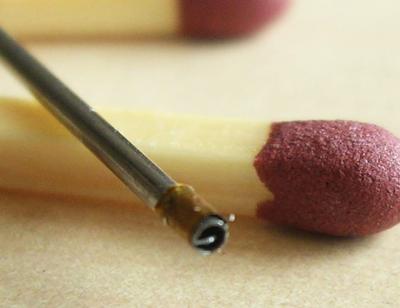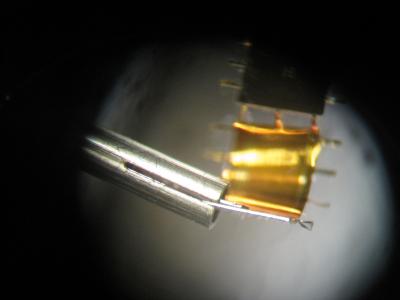Smart Flexible Sensors for in-vivo Coronary Circulation Diagnostics (Coronary)
Until recently the surgeon solely had to rely on an X-ray image to decide on the type of therapy. However, with the miniaturization of sensors and electronic circuits it has become feasible to integrate advanced electronic functionality in the tip of these guide wires which are only three human hairs in diameter! Since the guide wire is always there, this means added diagnostic information without the need for additional manipulations in the Cath-Lab, making these procedures safer at little additional costs.
In this project we are developing a combined pressure and flow sensor which is so small that it can be positioned in the tip of the guide wire. An Application Specific IC (ASIC), the width of a human hair, processes the analog signals and translates them to the digital domain. The photograph shows a mechanical study whereby the sensor platform with ASIC solder bumped on top is shifted into a tube of 800 um diameter with a flexible foil containing the flow sensor wrapped around it. The next step is to further reduce the diameter to 300 um and add full sensor and electronic functionality.

Project data
| Researchers: | Ronald Dekker, Benjamin Mimoun |
|---|---|
| Starting date: | January 2009 |
| Closing date: | January 2015 |
| Partners: | Group Cardiovascular Biomechanics, Faculty of Mechanical Engineering and Materials Technology, TU Eindhoven, Philips Research Eindhoven |
| Contact: | Ronald Dekker |